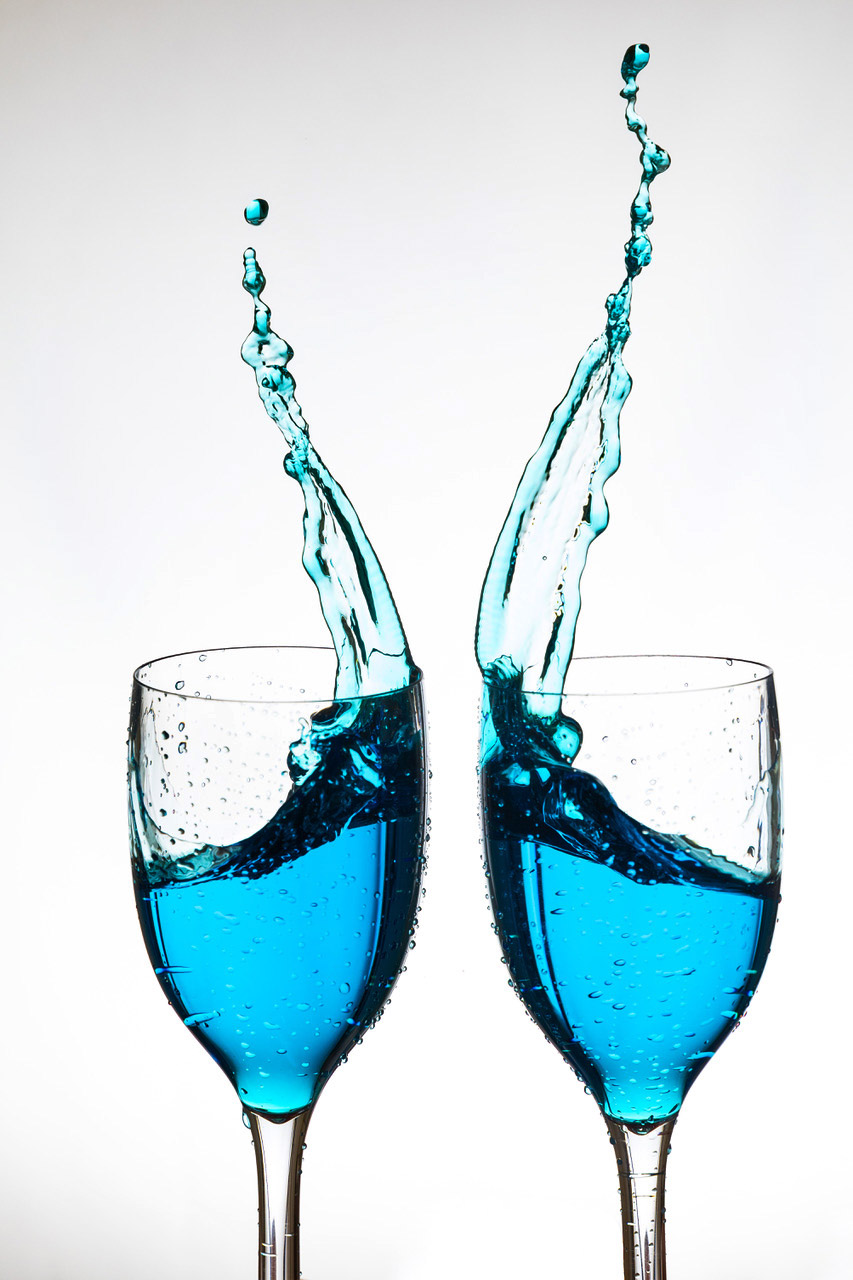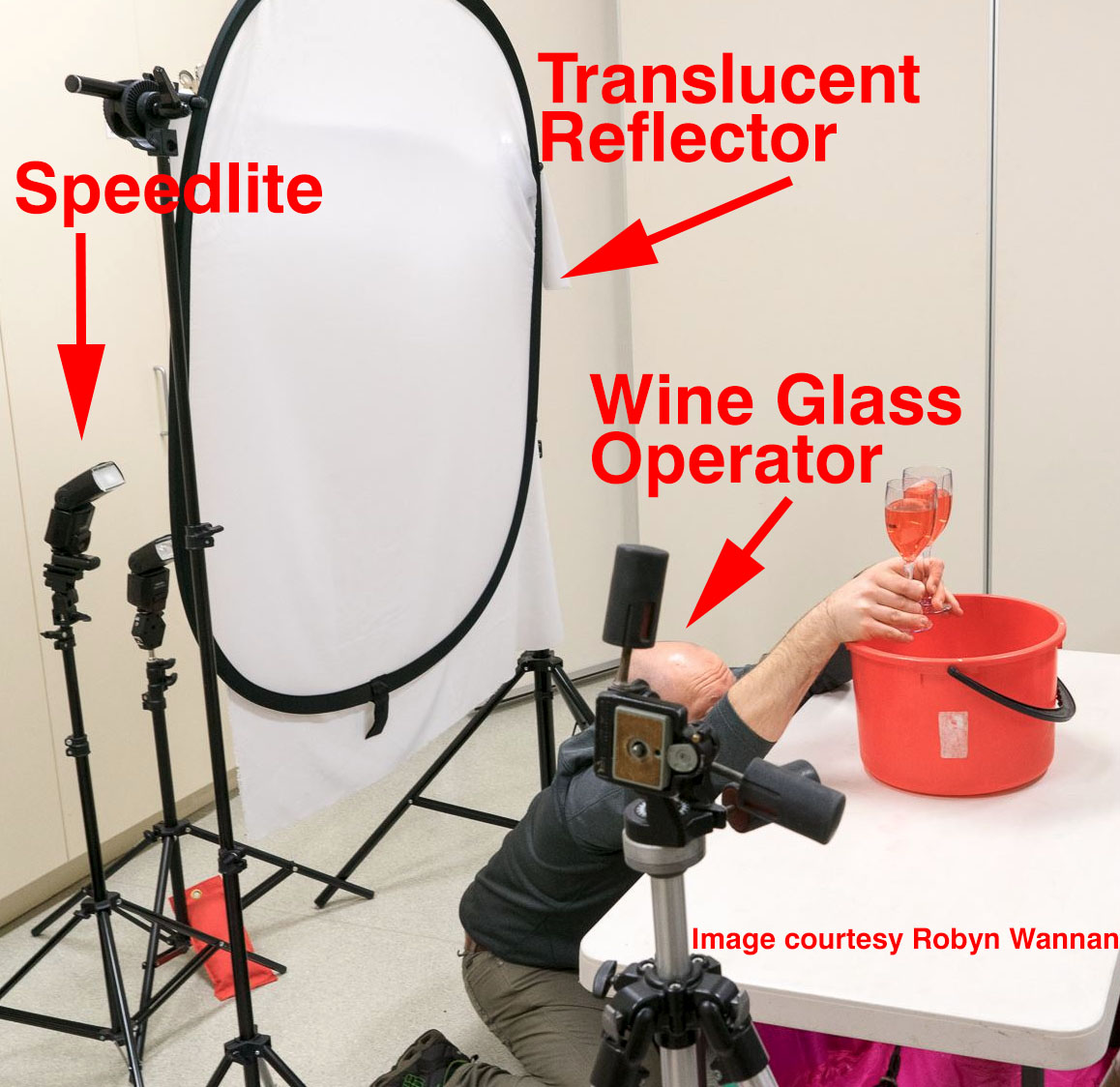Tutorials
Exploring the Bellarine
The Bellarine Peninsula holds a wealth of photographic opportunity. From country buildings and towns along the bay to surf coast locations just before the Great Ocean road. Being just over an hour away from Melbourne, it’s a wonderfully accessible location.
There are a few places here that we intended to shoot. The tried and tested lighthouse at Point Lonsdale for sunset, another attempt for yours truly at Point Addis for sunrise and a trip to Airys Inlet for sunset and something fun that Alex was intent on trying out.
Landscape photography is often unpredictable and really a case of just making the effort of being there and seeing what you get. Light, weather, and in the case of seascapes, tides and what’s been washed up often means the best conceptualised composition, even for a place you’ve been before, is usually thrown out the window.
That said, it’s the perfect conditions to forcing you to “be in the moment”. Some time spent taking in what’s going on and being present to it before getting your camera out can pay dividends.
Point Lonsdale was our destination for Friday evening. It’s very popular for photographers as it provides three distinct compositional elements – the lighthouse, the pier and rocky foreground creating rock pools when the tide is low (low tide was forecasted for the day. The Thursday night prior had put on one hell of a sunset with the sky burning red. Friday unfortunately brought no such joy.
Dark clouds and a punishing southerly wind meant a switch from favouring sky to foreground for compositions but the rock pools and water movement provided plenty of possibilities.
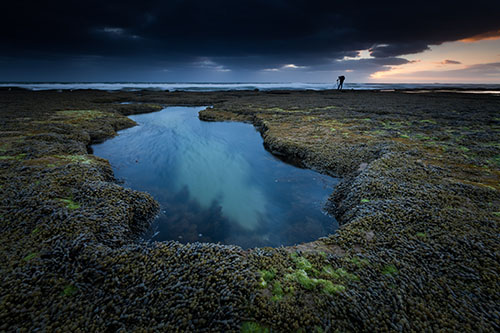
It really is amazing the difference filters can make to your photography. Any camera today still struggles to work with the amount of dynamic range that is present with strong lighting conditions. The NISI 4 stop reverse grad really brings that back into a manageable photo.
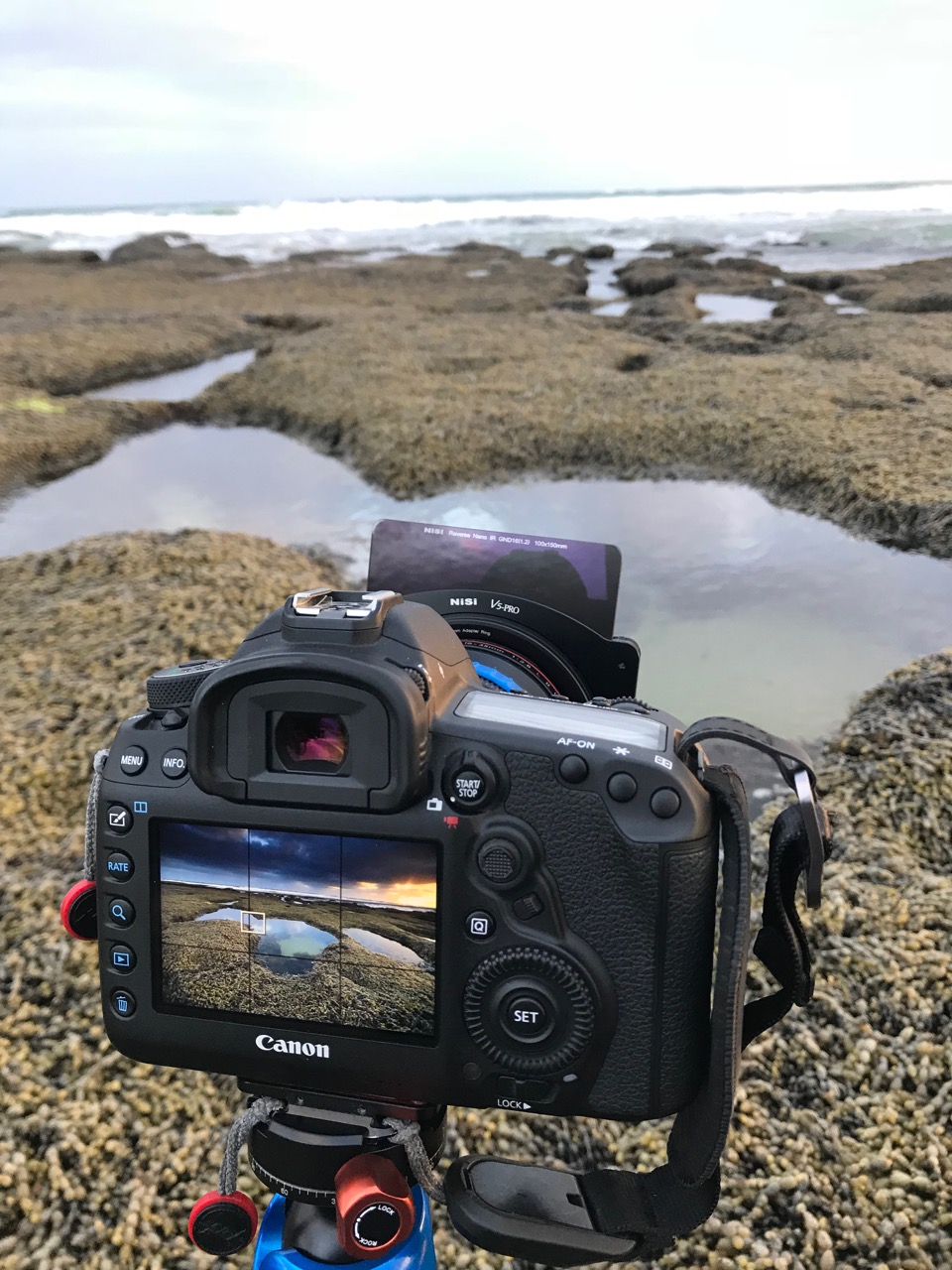
The next morning, we were off to Point Addis. This is a spot I have attempted to shoot a few times now. Getting to the caves along the shore is possible only with a fairly low tide and as I am not a local, the sky has tended to never put on anything remarkable. While the tides were perfect, the heavy dark clouds blocking the sunrise meant the 5:15am start to the day was not well rewarded.
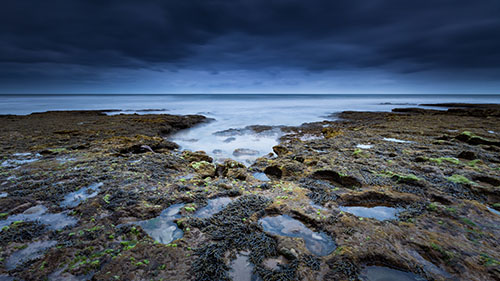
Leaving point Addis, we spent the day checking out other potential locations. Grey skies and intermittent rain badgered our efforts although a few potential locations have now bee added to the list. After taking the wrong road trying to access a picnic ground, we encountered one of those wonderful chance happenings as, to the side of the road, a small boat house on a private damn emerged. A few pictures were all we could manage before the rain drove us back to the car but we’ve now marked this for a future attempt.
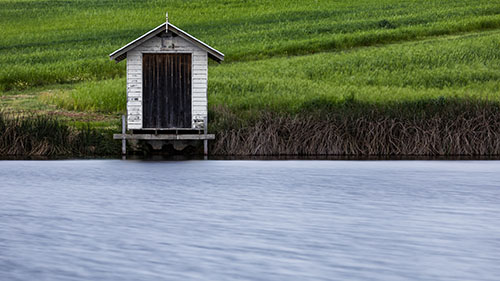
The plan for the evening was to catch a quick meal at the Airys Pub (which runs its own Micro Brewery – win!) and then out to the beach at Airys Inlet. Low tide exposed a vast amount of wonderful foreground to explore and for a while around dinner, breaks in the cloud suggested we might yet have an interesting sunset. Golden hour gave us some light to play with but sadly the horizon was blocked right around the time the sun went down.
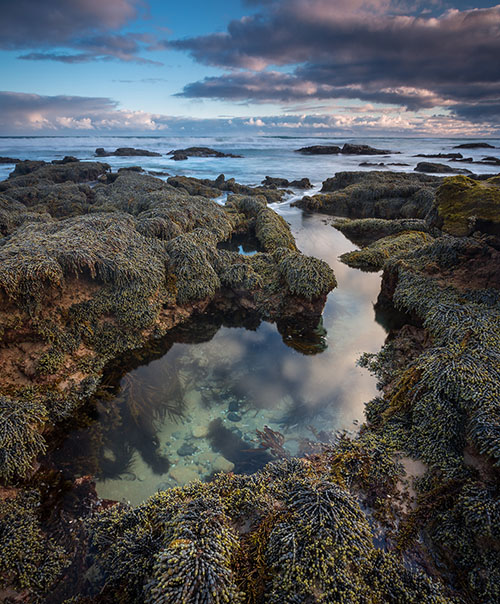
The beach at Airys Inlet provides not only small rock pools but also the beginnings of a cave under the lighthouse. This was the perfect place for Alex to try out something he’d been wanting to do for some time – some steel wool photography.
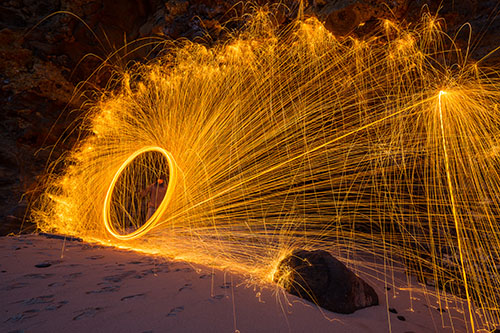
Both the cave and a nearby rock pool leant itself to the photos. The first allowing the sparks to bounce off, framing the cave. The water reflection, with the blue of the disappearing day providing background though was the stand out. I think that, location permitting, this will likely be a staple of future workshops.
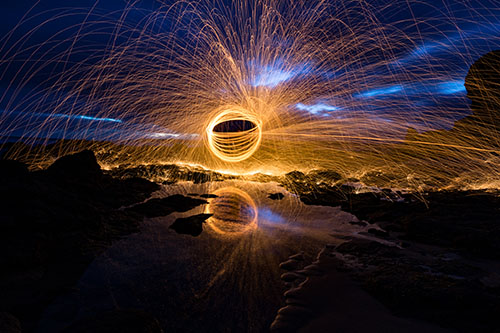
Exploring Ricketts Point with an Open Mind
Heading off to new locations in something we all love to do. Seeing a new location for the first time really gets the brain fired up. Not only looking at all the creative possibilities like compositions and framing that this new place holds, but also, at least for me, gets the technical cogs in my brain moving too. Looking at the light, understanding how it's interacting with the with the new location. Working out best aperture and shutters speeds to best convey the story within the photograph. Maybe that's a slow shutter speed to convey the passing of time and it's effect on the scene that our eyes can't pick up. Perhaps a wide aperture with it's shallow depth of field (DOF) to isolate a subject from it's surrounds. Figuring out if filters will help achieve these results, and which ones to use. All these possibilities start running around.
It's an exciting moment as a photographer having all these thoughts racing and put them all together into concept for a photograph. Then truly a magic moment after the shutter has fired and there, hopefully, on the back of the camera the LCD shows the result on all that thinking!
As you can guess, heading out to photograph a new spot is one of my favorite things to do. I do still have my favourite haunts, but more on those another time.
The other day I headed down to Rickett's Point Marine Sanctuary in Beaumaris. I'd seen a couple of photos on the internet and googlemaps satellite showed a decent rocky outcrop, so decided to check it out for a sunset shoot.
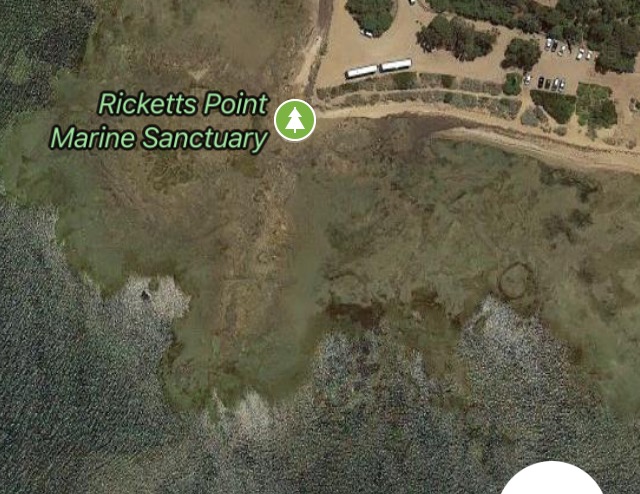
Walking out of the carpark onto the foreshore and bang! The brain fires up.Now on this occasion the weather ended up too cloudy for any real colour at sunset, and the tide was too low so the rocks were too exposed.No point dwelling on what I didn’t have, so shifting a few mind gears and I started to think about what I could do to with the conditions I had at that point in time to make some interesting photographs.Clouds were moving a little which meant using ND filters to slow my shutter speed right down could add some movement to the sky.Using reflections, concentrating on the green algae and looking at compositions to bring all these thoughts together into a photograph.
While the result were OK, I do know I’ll be back to try again.I guess that leads to another post for another day; re-visiting locations.
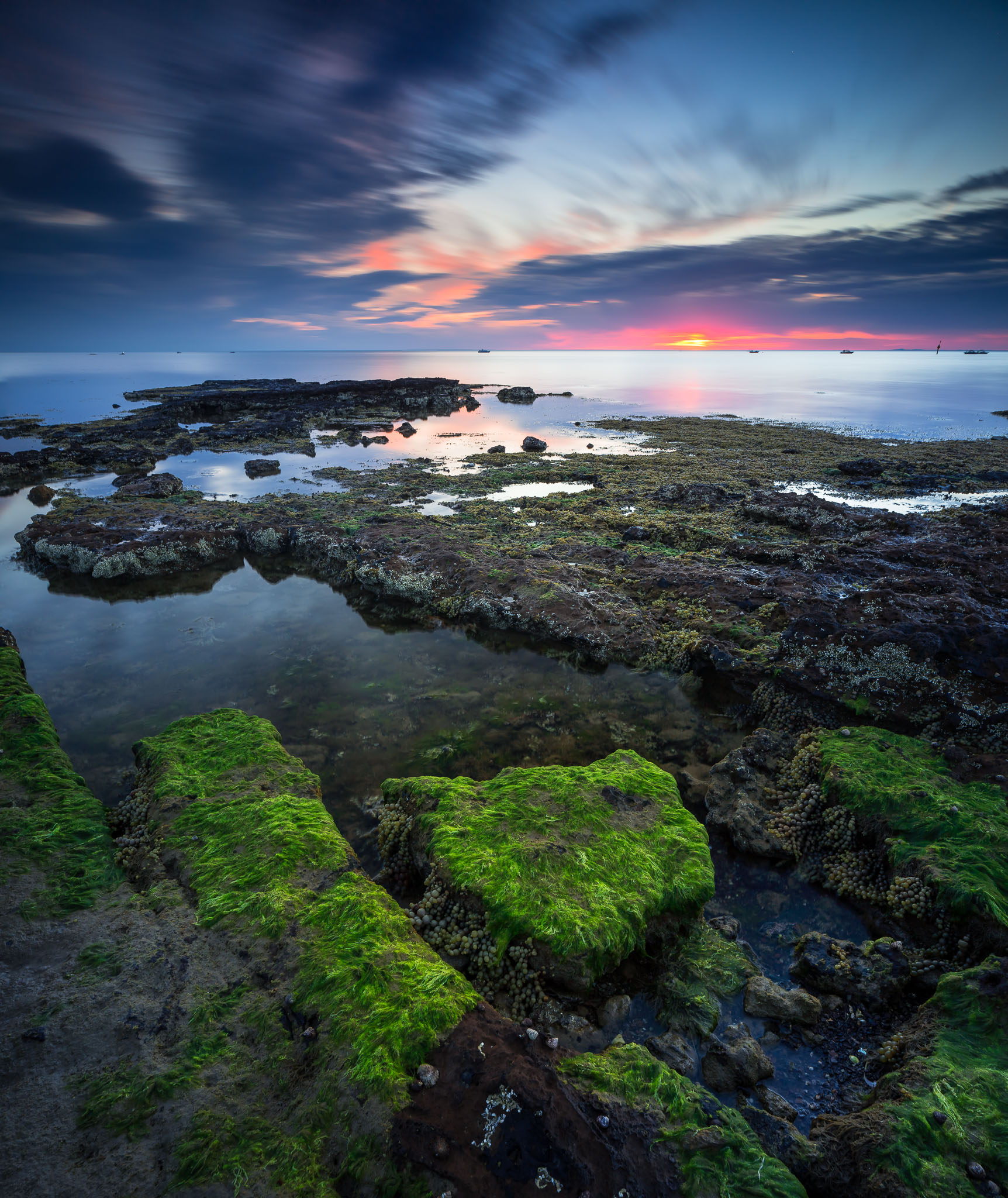
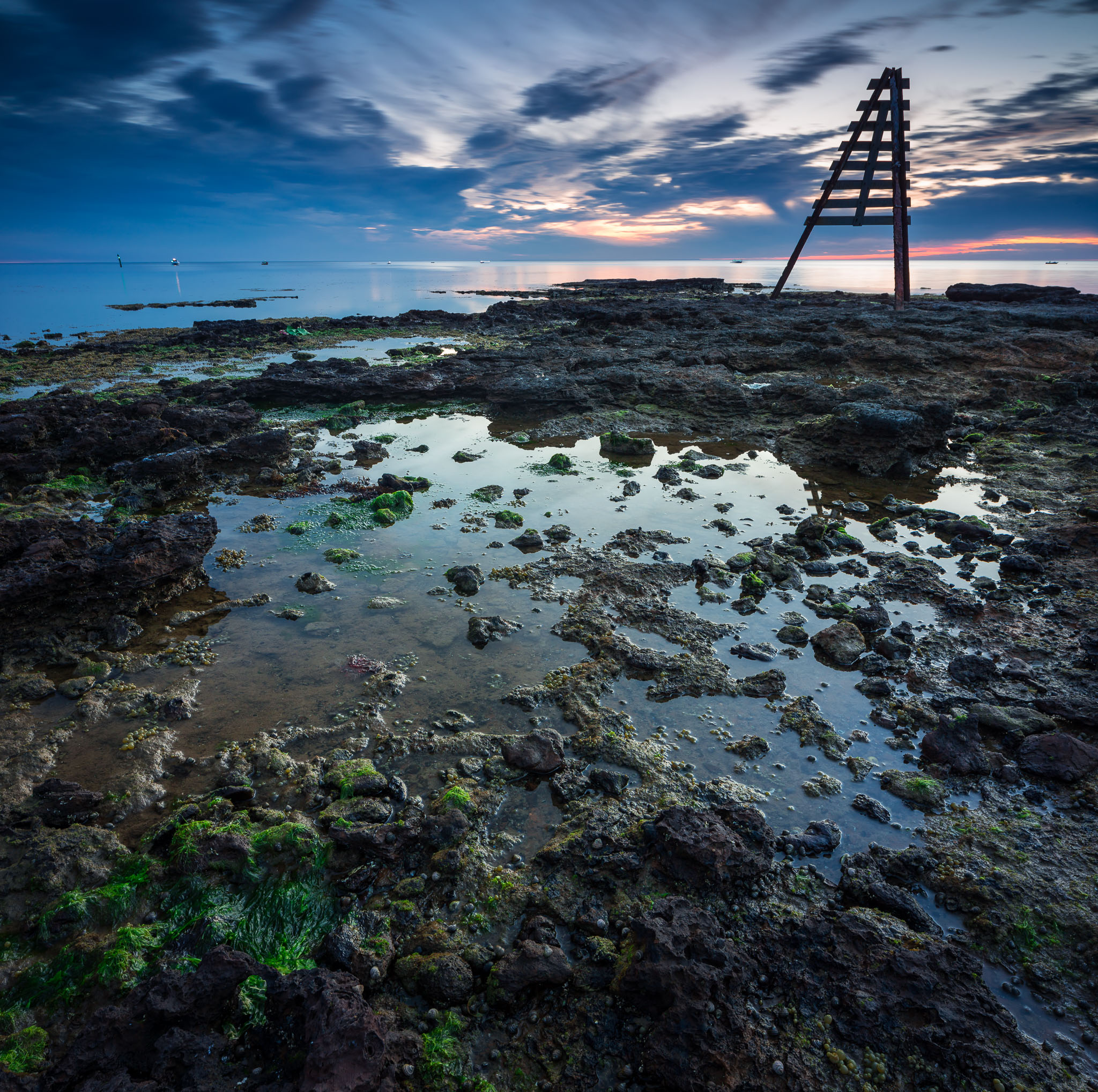

Splash Session
We were recently invited by the Essendon Camera Club to run a 'studio' for one of their 'bring your camera nights'. The brief was open so we decided to see how fast the trigger fingers of the ECC members really are. Could they time it just right to catch a great splash?
The set up was quite simple, a large translucent reflector with a speedlite behind it was both the background and the light source. Two plastic wine glasses, some food dye and a bucket on a table to catch most of the splashes was all that was needed for props.
On the technical side, the speedlite was set to 1/32 power. This reduces the flash duration sufficiently to freeze the motion of the splashes. An exposure was determined where the brightest area of the background was just white with some fall off of light towards the edges.
Next came the fun part - SPLASHING and SHOOTING! I mentioned earlier the bucket to catch the splashes, well that sort of happened. It was the wine glass 'operator' who caught most of the splashes.
A highly enjoyable evening where we learned that most ECC members did indeed have great timing skills. Thank you ECC for the invitation.
